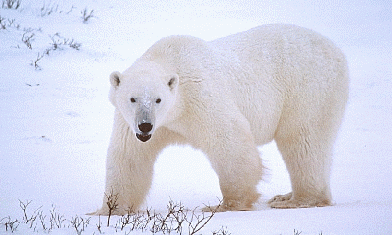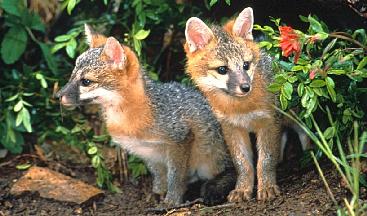
http://www.nhptv.org/natureworks/grizzly.htm
|
Name: |
Grizzly Bear |
| Description | The Grizzly Bear is white. |
| Habitat: | The grizzly bear lives along rivers and coastal areas, mountain meadows, and in the tundra. In parts of Europe and Asia, the grizzly can be found in forests and mountain woodlands. |
| Diet: | The grizzly bear is omnivorous. It eats berries, roots, fungi, grasses, fish, carrion, small mammals, and insects. It is very good at catching fish and it often uses its long claws to dig insects out of rotting logs and small mammals out of their burrows. Some grizzly bears in the Canadian Rockies hunt larger animals like moose, elk and goats. |
|
Name: |
Polar Bear |
| Description: | The polar bear is white and shaggy. |
| Habitat: | Though
they sometimes can be found on the tundra, polar bears usually
live near the water and often will go on ice flows in the ocean. |
| Diet: | The primary food source for polar bears is seals. They also eat fish, seabirds and sometimes reindeer. In the summer, they may also eat berries and other plants. |

http://www.nhptv.org/natureworks/polar.htm

http://www.nhptv.org/natureworks/grayfox.htm
|
Name: |
fox |
| Description: | The gray fox can be found from southern Canada to northern Columbia and Venezuela. It is not found in some mountainous parts of the Northwest United States and in the Great Plains. |
| Habitat: |
The gray fox lives in a wide variety of habitats, but prefers areas with lots of brush or woods. |
| Diet: | The gray
fox is a solitary hunter and eats a wide variety of foods. A
large part of its diet is made up of small mammals like mice,
voles, and. It also eats birds, insects, and plants like corn,
apples, nuts, berries, and grass. In the summer and autumn
grasshoppers and crickets are an important part of its diet. |